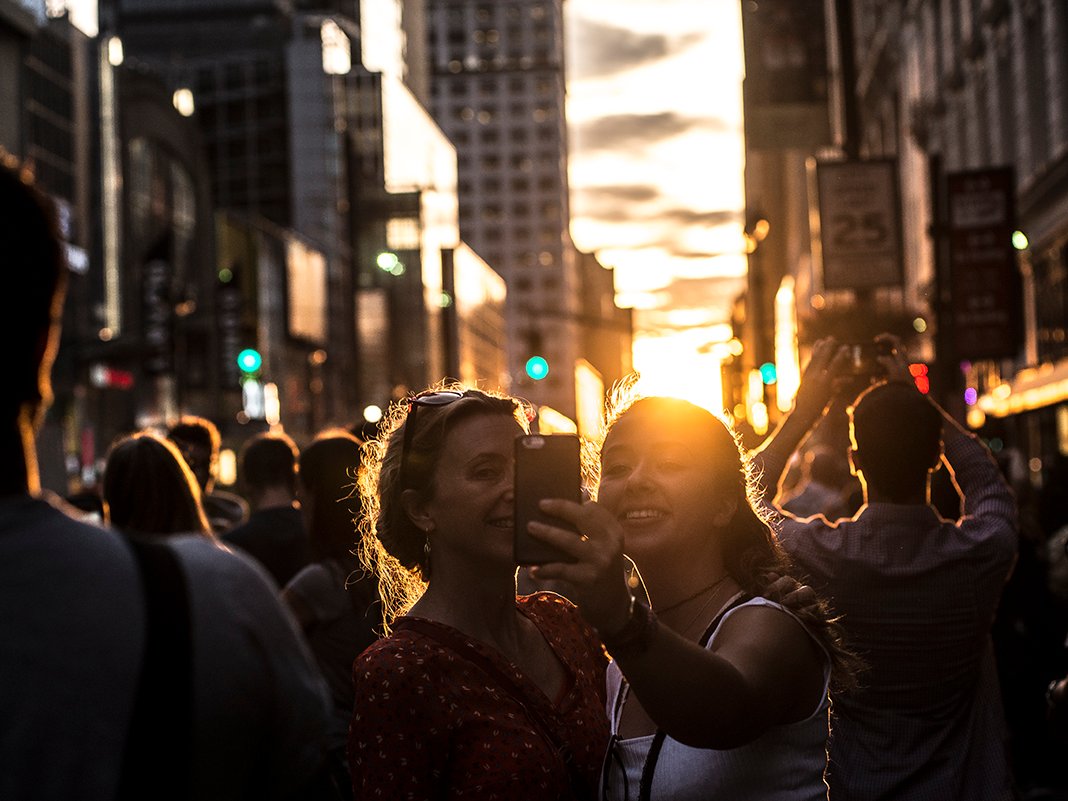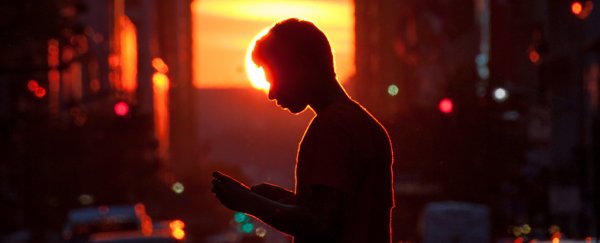Twice each summer, the Sun, Earth, and monuments of human industry create a spectacle of light called "Manhattanhenge": when the sunset aligns perfectly with the city's gridded streets.
The name is a portmanteau of Stonehenge - which prehistoric people likely built to line up with the Sun - and the island of Manhattan.
Unlike Stonehenge, however, Manhattanhenge is a beautiful accident of city planning.
If you're in the right place at the right time, you can watch a floating, orange-hued orb of plasma slip right between miles-long corridors of skyscrapers.
I saw my first one in 2009, and it was breathtaking. It's like photography's famous "golden hour" but on steroids, given the crowds of people, competing car and street lights, and dramatic backdrop of buildings with mirror-like panes of glass that reflect colourful sunlight up and down the roads and footpaths.
When to watch a Manhattanhenge sunset in 2018
Manhattanhenge straddles the summer solstice on June 21 over two pairs of days - one that happens several weeks before the solstice, and the other several weeks after.
On one day in each set, the sun will set halfway below the horizon; on the other day, onlookers can get a full-disk view of the sun.
Neil deGrasse Tyson, an astronomer at the American Museum of Natural History, says in his annually updated blog post that the first set of days are today and tomorrow:
- Tuesday, May 29, at 8:13 pm EDT – half-disk sunset
- Wednesday, May 30, at 8:12 pm EDT – full-disk sunset
The second set happens in July:
- Thursday, July 12, at 8:20 pm EDT – full-disk sunset
- Friday, July 13, at 8:21 pm EDT – half-disk sunset
The best locations in NYC to watch Manhattanhenge
 (Rafi Letzter/Tech Insider)
(Rafi Letzter/Tech Insider)
If you're in New York City on these dates and times, and the skies aren't overcast, a few viewing streets rise above the rest.
The best ones are 14th, 23rd, 34th, 42nd, and 57th Streets, partly because they're wider and can accommodate more foot traffic. Beware of 34th and 42nd Streets, however, as they're often the busiest and people go there to get views of the Empire State and Chrysler buildings.
If you have time to scope out a prime viewing spot along one of these streets, look farther east to get the best cityscape effect, though make sure you find a high point – otherwise, a distant hill or other object may block your view.
Going to the west side may not set as dramatic a scene, but on short notice it's a better bet, since you're more likely to get an unobstructed view.
Tyson recommends that you arrive at your viewing spot half an hour before the sun sets on the day of Manhattanhenge.
But this chance astronomical event seems to get more popular with each passing year, given the rise of Instagram, Facebook, and other photo-sharing platforms, so 45 minutes wouldn't hurt.
How to see the 'henges' of other gridded cities
Can't make it to New York City's Manhattanhenge? You don't have to worry for a number of reasons.
First, these dates aren't the only ones to watch the sun set between buildings - designer Andrew Hill created an interactive "NYCHenge" map to show all the days and times of the year that opportune sunsets occur.
Hill's map also reveals that New York City isn't the only place to see "henge" sunsets: In fact, almost any city on a grid can witness them. (Bostonhenge, anyone?)
Wherever and whenever you watch, please make sure you don't wander agape into those sun-painted roadways - and get hit by a car or bus.
This article was originally published by Business Insider.
More from Business Insider:
